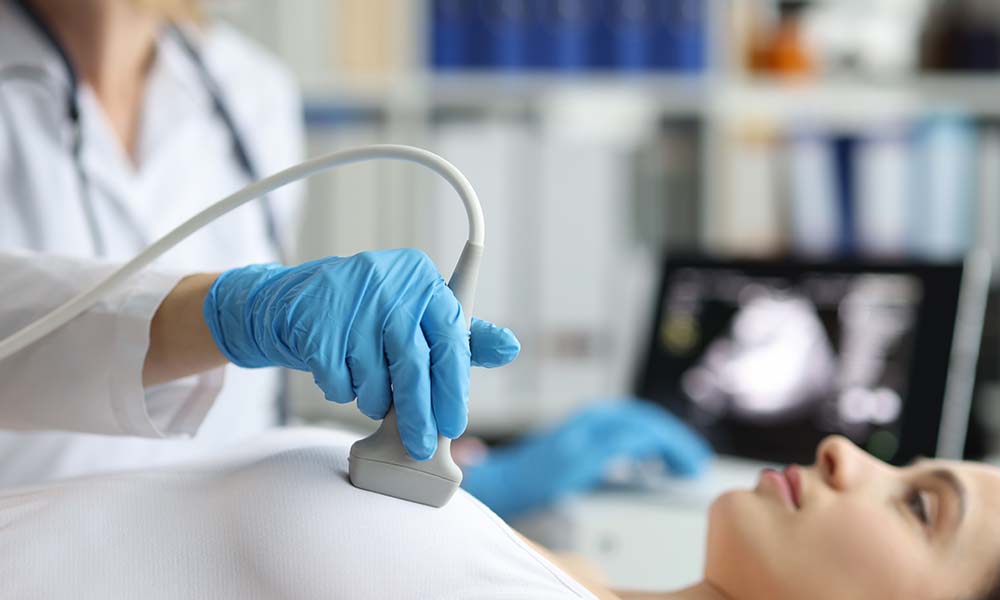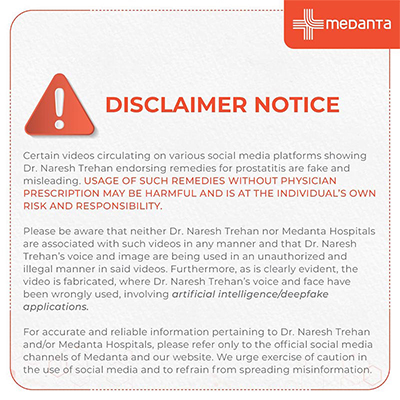Top 10 Common Types of Cancer and Their Early Signs

TABLE OF CONTENTS
Cancer touches the lives of millions worldwide. Medical science has identified more than 100 different types of this disease. It remains the second leading reason of death globally, but modern screening and treatment advances keep improving survival rates.
Different cancers target specific body parts, ranging from skin to internal organs. Let's explore the top 10 most common cancers and their unique characteristics. Readers will also learn about crucial early warning signs that could save lives. Quick detection often leads to better treatment results.
Breast Cancer
Breast malignancy is one of the most common cancers that affect both women and men. Most cases begin in the ducts that carry milk to the nipple or in lobules where breast milk forms. Around 80% of breast cancer cases can spread from the breast to other body parts.
Many women with breast cancer don't notice symptoms early on, which makes regular mammogram screenings vital. Early detection depends on knowing the warning signs.
Common symptoms in early stages

A new lump or mass in breast tissue is the most common early warning sign. While most breast lumps aren't cancer, some characteristics need immediate medical attention.
Additional early warning signs include:
Changes in breast appearance:
Hard, painless masses with uneven edges
Swollen or thickened breast tissue
Size or shape differences
Skin dimpling that looks like orange peel
Red or flaky skin near the nipple
Nipple-related changes:
Nipples that turn inward
Unusual discharge with blood
Pain or discomfort around the nipple
Cancer spread might cause swollen lymph nodes under the arm or near the collarbone. These changes sometimes happen before you can feel the original tumour.
Lung Cancer
Lung cancer ranks among the deadliest cancers worldwide. It affects the cells that line air passages in the lungs. Early detection through warning signs leads to better outcomes with quick medical intervention.
The disease has two main forms: small-cell lung cancer (SCLC) and non-small-cell lung cancer (NSCLC). NSCLC is more common and accounts for about 85% of all lung cancer cases, while small-cell lung cancer is less common but spreads faster through the body.
Common symptoms in early stages
Early symptoms can be hard to spot because they look like regular breathing problems. Here are warning signs that need a doctor's attention:
Respiratory changes:
A cough that won't go away after three weeks
Chest infections that keep coming back
Breathing problems with no clear cause
Blood or rust-coloured phlegm in cough
Voice changes or becoming hoarse
Physical symptoms:
Weight loss without trying
Feeling tired and weak
Pain in the chest or shoulder that gets worse with breathing
Not feeling hungry
Problems swallowing
Each cancer type and location brings different symptoms. SCLC tends to be more aggressive and spreads quickly to other parts of the body. NSCLC usually grows slower, which helps doctors catch it earlier through regular screening.
Prostate Cancer
The prostate gland sits beneath the bladder in males. This small organ can develop cancer cells that multiply without control. Most men live for years without knowing they have this disease or experiencing any symptoms. Men aged 50 and above face a higher risk of prostate cancer, which ranks among the most common types of cancer in men.
Common symptoms in early stages
Early-stage prostate cancer often shows no symptoms. However, these warning signs might point to prostate cancer:
Urinary Changes:
Night-time trips to the bathroom become frequent
The urine stream weakens or starting becomes difficult
Blood appears in urine
Urination causes burning
Urination becomes impossible
Bladder control diminishes
Physical Symptoms:
Lower back, hip or pelvic pain develops
Sitting becomes uncomfortable
Erectile function decreases
Ejaculation causes pain
Weight drops without explanation
Skin Cancer
Skin cells undergo abnormal changes that lead to melanoma and non-melanoma skin cancers. These cancers stand out from other types because they develop visible signs on the body's surface. This visibility makes them easier to spot during regular skin checks.
Common symptoms in early stages (ABCDE Rule)
Doctors review suspicious moles or skin changes with the ABCDE rule. This well-laid-out approach helps identify potential melanomas:
A - Asymmetry
Normal moles look symmetrical
Melanomas usually show uneven shapes where one half doesn't match the other.
B - Border
Healthy moles have smooth, even borders
Cancerous growths show jagged, notched, or scalloped edges
C - Colour
Regular moles stay one consistent colour
Suspicious spots show different shades of brown, tan, or black
Red, white, or blue patches might appear
D - Diameter
Regular moles stay smaller than 6 millimetres
Melanomas often grow beyond this size
Quick growth in existing moles needs attention
E - Evolving
Healthy moles maintain their appearance
Concerning spots change size, shape, or colour
Look out for bleeding, itching, or crusting
Monthly skin self-checks are vital to tracking changes and spotting potential issues early. A doctor should immediately review any suspicious changes to ensure better treatment outcomes.
Colon Cancer
Colorectal tumour starts in the large intestine (colon) or rectum. Doctors rank it as the third most diagnosed cancer worldwide. The cancer develops when healthy cells in the colon's DNA mutate and grow uncontrollably.
Common symptoms in early stages
People often miss the subtle signs of colon cancer or think they're caused by something else. Knowing these warning signs helps you get medical help quickly:
Changes in Bowel Habits:
Long-lasting changes in bowel movements
Diarrhoea and constipation that alternate
Narrow stools
A feeling that your bowels don't empty fully
Physical Symptoms:
Blood in stool or rectal bleeding
Weight loss without explanation
Stomach discomfort that won't go away
Weakness or fatigue
Unexplained anaemia
Early detection through regular screening saves lives. Starting regular screenings at age 45 remains vital to catch and treat the cancer early.
Bladder Cancer
The urinary bladder stores urine and works as a muscular organ. Cancer cells
usually start growing in the bladder wall's lining. Bladder cancer affects thousands of people yearly, and smoking causes 50% of all cases.
Common symptoms in early stages
Blood in urine is the most prominent early warning sign of bladder cancer. This symptom, known as haematuria, comes and goes over time but needs immediate medical attention. The blood ranges from bright red to dark brown; doctors can sometimes only see it through microscopic examination.
Other early symptoms include:
Changes in Urination:
Frequent urination without drinking more fluids
Burning sensation while passing urine
Trouble starting urination
Weak urine stream
Need to urinate even with an empty bladder
Physical Discomfort:
Lower back pain on one side
Pelvic discomfort
Bone pain in advanced cases
Unexplained weight loss
Fatigue and weakness
Blood Cancer
Blood disorders include various cancers that affect blood cells and bone marrow. These diseases change how the body makes healthy blood components. Cancer disrupts normal blood cell production and affects vital functions like fighting infections, carrying oxygen, and controlling bleeding.
Blood cancer comes in three main categories:
Leukaemia: Affects blood-forming tissues, mainly bone marrow
Lymphoma: Affects the lymphatic system
Myeloma: Targets plasma cells in bone marrow
Each type brings its own challenges.
Common symptoms in early stages
Blood cancer often looks like a common illness at first, which makes it hard to spot early. Here are warning signs that need a doctor's attention:
Blood-related Changes:
Bruising or bleeding without injury
Frequent nosebleeds
Small red spots under your skin
Looking pale
Wounds that take long to heal
Systemic Symptoms:
Feeling tired all the time
Getting sick often or taking too long to recover
Sweating at night
Fever that won't go away
Pain in bones or joints
Lymphatic System Changes:
Swollen lymph nodes in your armpits, neck, or groin
An enlarged spleen that causes stomach pain
Pain or pressure in your chest
Trouble breathing
Additional Warning Signs:
Losing weight without trying
Not feeling hungry
Skin that itches
Headaches
Feeling confused or dizzy
Pancreatic Cancer
Pancreatic cancer stands out as one of the most aggressive cancers. The pancreas sits behind the stomach and plays a substantial role in digestion and blood sugar regulation. Cancer develops when the pancreas's cells multiply abnormally. This type of cancer spreads faster than most others before doctors can detect it.
Common symptoms in early stages
People rarely notice pancreatic cancer symptoms until later stages. This makes it known as a silent disease. However, some warning signs might develop slowly:
Digestive Changes:
Yellowing of skin and eyes (jaundice)
Light-coloured or greasy stools
Dark urine
Poor appetite
Nausea and vomiting
Problems digesting fatty foods
Physical Signs:
Unexplained weight loss
Upper abdominal pain that extends to the back
New diabetes without a clear cause
Depression and anxiety
Ongoing fatigue
Blood clots
Thyroid Cancer
The thyroid gland is situated at the base of the neck & secretes hormones that regulate metabolism, growth, and body temperature. This butterfly-shaped gland can develop cancer when cells grow abnormally, disrupting hormone production and affecting overall health.
Several distinct types of thyroid cancer exist:
Papillary thyroid cancer (Most common type)
Follicular thyroid cancer
Medullary thyroid cancer
Anaplastic thyroid cancer
Common symptoms in early stages
Thyroid cancer shows subtle signs that you might miss. Watch for these warning signs:
Physical Changes:
A lump or nodule in your neck
Swelling around the thyroid area
Persistent hoarseness
Trouble swallowing
Neck and throat pain
Voice and Breathing Issues:
Changes in voice quality
Breathing problems
A chronic cough unrelated to cold
Throat tightness
Oral Cancer
Oral tumour ranks as the 11th most common cancer worldwide. Around 300,000 new cases emerge each year, resulting in 145,000 deaths. This cancer affects the lips, tongue, gums, palate, floor of mouth, and other parts of the oral cavity. Most cases start in squamous cells - flat, thin cells that line the lips and mouth's interior. Tobacco use and excessive alcohol consumption cause over 90% of cases.
Common symptoms in early stages
Early detection is vital since oral cancer often looks like common mouth problems initially. Watch out for these warning signs:
Physical Changes in Mouth:
White patches (leukoplakia) or red patches (erythroplakia)
Rough spots or crusty areas on lips, gums, or inside mouth
Sores that bleed easily and don't heal within two weeks
Changes in mouth tissues' texture or colour
Functional Changes:
Problems with chewing, swallowing, or speaking
Limited jaw or tongue movement
Numbness in the mouth or facial area
Ongoing pain without apparent cause
Conclusion
Cancer awareness and early detection are vital to successful treatment outcomes. Each type of cancer brings its own challenges, but knowing common warning signs helps doctors intervene quickly. Health screenings are essential, especially when you have high-risk factors.
Medical advances help improve cancer survival rates every day. Early detection through regular check-ups gives you the best chance for successful treatment.
Regular medical check-ups, knowing your personal risk factors, and spotting warning signs are key steps to better health outcomes. Of course, understanding different cancer types and their symptoms allows you to manage your health through prevention and timely doctor visits.
FAQs
Who can develop cancer?
Cancer affects people of all ages, and the risk usually goes up as we age. Each person's risk depends on factors like smoking habits, lifestyle choices, family history, and exposure to environmental factors.
How does cancer begin?
Cancer starts with cells that mutate and grow out of control. These cells form masses called tumours. The abnormal cells can attack healthy tissues and spread throughout the body through metastasis.
Is cancer genetic?
Cancer develops through changes in genes. Only 5-10% of cases come from inherited mutations. Most genetic changes happen during a person's life due to other factors.
Can cancer spread from person to person?
No, cancer doesn't spread between people like a cold or flu does. You can't catch cancer by having physical contact with someone who has it.
Are there vaccines against cancer?
We don't have direct cancer vaccines yet. However, some vaccines protect against viruses that can lead to certain cancers. These include HPV vaccines for cervical, anal, and throat cancers and hepatitis B vaccines for liver cancer.
What treatment options exist?
The treatment plan changes based on cancer type and stage. Options include:
Surgery to remove tumours
Chemotherapy uses drugs to destroy cancer cells
Targeted therapy focusing on specific genes
Immunotherapy working with the immune system






